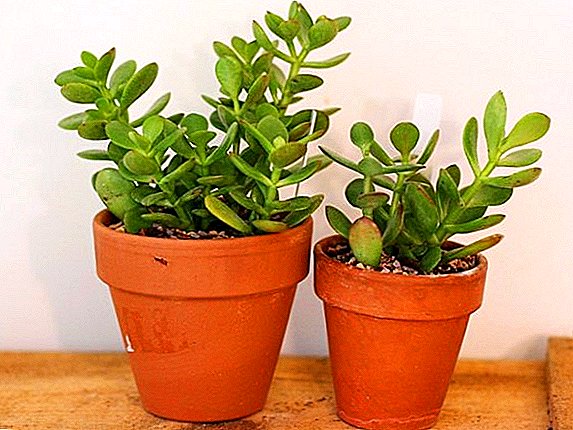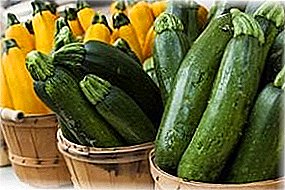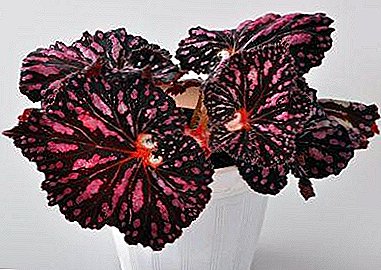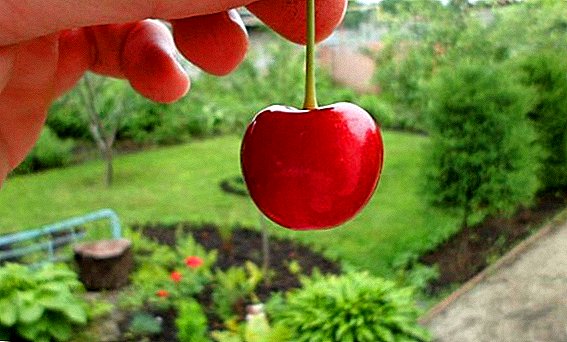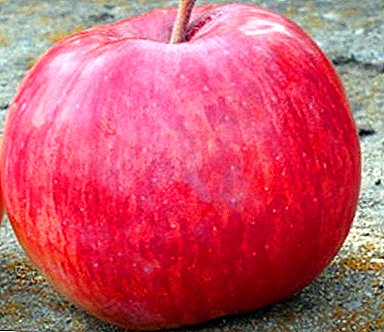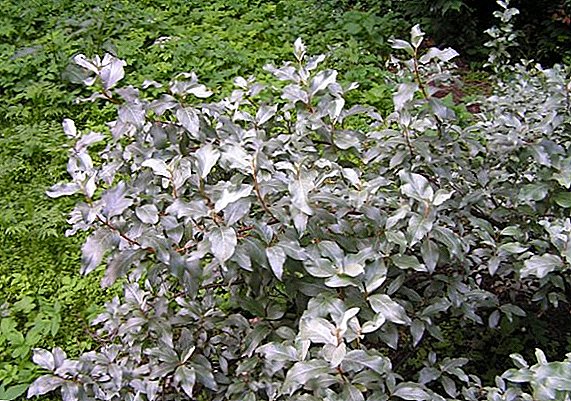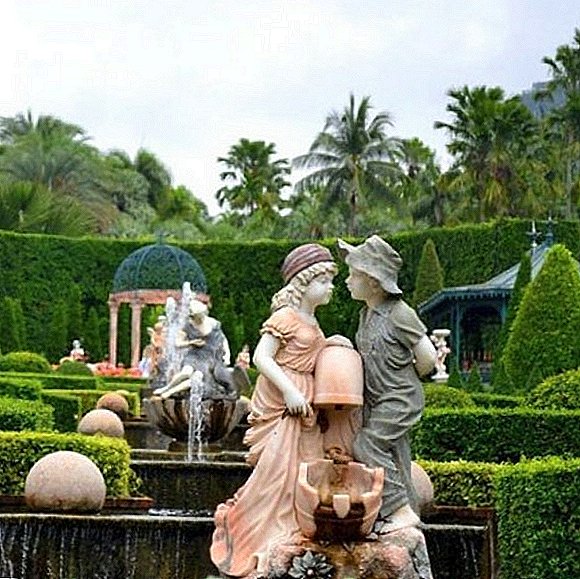 Modern man is constantly experiencing emotional stress in the care and bustle of big cities. Mental rest in the park among the exquisite sculptures - this is what helps to relax and unwind. In order for the sculptures to look in your garden expediently and harmoniously, it is necessary to know the peculiarities of their traditional placement and to distinguish between their styles and types.
Modern man is constantly experiencing emotional stress in the care and bustle of big cities. Mental rest in the park among the exquisite sculptures - this is what helps to relax and unwind. In order for the sculptures to look in your garden expediently and harmoniously, it is necessary to know the peculiarities of their traditional placement and to distinguish between their styles and types.
Kinds
Experts identify 4 types of landscape sculptures:
- stele. It is a stone slab located perpendicular to the surface of the earth. But on each plate there is some image or artistic relief;
- the statue. This is a kind of figurines of animals or people that are made in full size, or slightly exceeding it. Three-dimensional figures can display a real person or animal, as well as a copy of a fantastic creature (centaur, angel);


Did you know? The most expensive sculpture in the world was sold for a record 141.3 million dollars. She created the Swiss painter Alberto Giacometti. His creation was called "Pointing Man."
- monument. The sculpture, designed to perpetuate the events, literary characters, famous people. Often, monuments are made in the form of a plate with an inscription, a triumphal arch, a bust, columns, etc .;
- obelisk. The monument, which narrows as it strives towards the sky. In most cases, has a square cross section, sometimes resembles an elongated pyramid.


Materials for making sculptures
Garden and park sculptures can be purchased or made yourself. The material of the products is different, it depends on the durability and wear resistance of the sculpture, as well as their price. We give a list of materials used most often.
- Tree.Probably the most versatile material for making statues and not only. Absolutely any of your imagination can be translated into reality thanks to the usual wooden beam. Wooden products will perfectly revive even the most inconspicuous corner of your garden, you can create them yourself or order a figure of interest to you from a specialist. Prices for such products depend on the complexity of the work performed and the type of wood. For example, if you want a beautiful statue with a height of 1 m and a width of 20-30 cm, then the master must pay from 100 to 300 dollars. But wooden products have one minus - they are short-lived. Of course, if the product is covered with stain or varnish, the service life will last significantly. However, the natural processes of decay of wood will start sooner or later, even after 30 or 40 years.
 Sample wooden sculpture
Sample wooden sculptureImportant! Hornbeam, oak, beech and aspen are considered the most durable and durable tree species. Products from such wood (if they are coated with varnish or wood stain) will preserve their original appearance for a long time.
- Gypsum. Products from this material are still among the most popular. Gypsum is a fairly common and relatively cheap material. Gnomes and gypsum angels can look very natural. They will give your garden unreal fabulousness and beauty. But such products have one important drawback - the material is very fragile and brittle. With a casual attitude, the sculpture can be smashed or split. But if you order the product from a professional, you can be sure of the reliability of his creation. Often masters cover gypsum with special materials that significantly strengthen the sculpture. Such products can serve you for many decades. Prices vary depending on the complexity of the work done and the volume of the sculpture itself. For example, a small angel with a height of about 30 cm can be purchased for 20-30 dollars.
- Different types of stone. Stone steles, statues, obelisks, located in a lush and elegant garden, always speak of good wealth of the owner. The fact is that beautiful stone products are not so easy to make, so the prices for them are a little bit "bite." For example, chic marble angels can give an atmosphere of luxury to any garden, but the prices of celestial specimens are quite high: a product about 1 m high will be valued at $ 300 or more. You need to properly care for marble: cover for the winter or take it to a warm room. Ideally, marble statues can serve you for about 100 years. There are more expensive stones - quartz, granite, polystone (artificial acrylic stone). Products from such materials are not afraid of any weather conditions, even the most extreme. Quartz or granite sculptures can stand for hundreds of years under the fierce frosts of snowy winters. Prices for a meter statue of a gnome or an angel of such stones start at $ 1,000.
- Metal. Often metal sculptures are made on the basis of copper or bronze. Such statues can perfectly highlight the design of your unique garden or landscape park. The main positive quality of such products is a long service life. Copper and bronze do not oxidize, rust or dull, despite the changing climate. Even your grandchildren will be able to see the initial appearance of metal statues in a few decades. But since it will not be possible to make them yourself, you will have to pay a high price for a professional master. For example, a small statuette of a lion with a height of only 20-25 cm will cost you about 50-70 dollars.
- Ceramics. Material, products from which remain among the most popular on the market. And all because of the low cost of sculptures. The production of statues, monuments and figurines from ceramics is widely established in the CIS countries, and, frankly, some manufacturers do not care about quality at all, making the basic bias to low prices. In this case, everything is very transparent and clear: prices are affordable for the average person (for a 50 cm tall figure you will pay no more than $ 15-20), but the lifetime of the sculpture is small (from 3 to 15 years).
- Concrete. Products may differ in beauty and give your garden a little elegance and fabulousness, but the durability of such handicrafts is quite small. Severe frost adversely affects concrete figures and statues: they begin to crack and crumble right before your eyes. The service life in pristine condition does not exceed 5 years. At the same time, prices can bite (for example, the cost of a half-meter-high concrete angel is about $ 80).
- Vegetation sculptures or topiary (sometimes topiary). You can add unforgettable beauty to your garden with ordinary garden shears and a little bit of fantasy and patience. Topiary - a garden sculpture of plants. You can make them yourself, but it is best to invite a professional master. To maintain the designed design, pruning should be done 3-4 times a year. Prices are affordable for almost everyone (depending on the level of professionalism of the master, the price for processing 1 cubic meter of plants can be from 10 to 50 dollars).
 Gypsum sculpture
Gypsum sculpture Garden Granite Sculptures
Garden Granite Sculptures Garden sculpture from metal
Garden sculpture from metalDid you know? For the manufacture of the statue of liberty it was necessary to use 225 tons of copper.
 Garden sculptures from ceramics
Garden sculptures from ceramics
 Garden sculptures topiary
Garden sculptures topiaryThe choice of sculpture
When choosing a culture should focus on the style of your own garden. Classical sculptures will add elegance and severity to the regular garden style, and romantic nymphs, angels and amurchiki will complement the landscape style well.
If you are the owner of a country-style garden, then it is best to buy sculptures of various hedgehogs, chanterelles, wolves, etc. Any garden of natural style will be more perfect and beautiful with rare and fascinating stones in it.
Did you know? The Frenchman Auguste Rodin - one of the founders of modern sculpture, three times tried to enroll in the Paris School of Fine Arts, but he was constantly rejected. Today, three museums are dedicated to his works, and copies of his works are located in many countries of the world.
When choosing, you should always rely only on your own taste and imagination. Saving at refining a decorative park or garden can play a cruel joke with you. It is better to pay a little more and buy a sculpture of quality material that will look beautiful in many years in winter and summer.
Styles
Considering each individual sculpture as a representative of a particular style is quite difficult. This is due to the fact that there are more than a dozen different areas of landscape design, in addition, some types of statuettes, obelisks, statues, steles can be attributed to several styles at once. For greater convenience, experts have identified only three main styles of sculptures:
- classical and antique. It includes the art of ancient Rome and Greece. In those cultures there were often statues of gods and goddesses, wall fountains, stone bowls, and graceful obelisks. Here are allocated crafts from durable stones, which can be a great addition to landscape styles with elements of topiarnogo art;
- pronounced national character. A group of sculptures that can be accurately attributed to any particular type of culture (Eastern, Italian, Greek, English, etc.). For example, stone lions with a gorgeous mane will immediately give out the English style, small wooden mills will give fullness to the Dutch style, and Buddha figurines are an integral part of Asian culture;
- pastoral sculpture. Landscape garden, permeated with memories of childhood, causing a game with a mood - such a cozy decorative corner can be called pastoral or sentimental. The second name displays the full depth of the decorator's idea. Pastoral sculpture always causes pleasant sensations, relaxes and creates harmony in the soul. These include elves, gnomes, mermaids, fairies. Fairy-tale houses and other objects will also become an integral part of the garden with a pastoral mood.



In order to choose the right style of the garden, you need to carefully study it. The task is not easy, but sometimes a certain style becomes obvious. It is necessary to assess the size of the site, the types and size of flower beds, the types of trees, the presence of water bodies, etc.
You will be interested to learn about crafts for the garden with your own hands: how to make a ladybug, also learn how to decorate a tree stump and make a bed of wheel tires or stones.
Sculpture making
We want to tell you about the method of manufacturing a house of mushroom plaster for hamsters. This sculpture is very easy to do. To do this, we do not need to use special tools, in addition, you do not need to have the professional skills of an architect or a sculptor. Step-by-step manufacturing process is as follows:
- Cut the top of the plastic bottle (leave the tip about 20 cm long).
- Cut a hole in the side of the bottle for entry (preferably in the form of an elongated semicircle).
- Cut off the neck of the bottle and seal it tightly with scotch tape.
- We pour the bottle, which is the basis, with plaster. We wait for some time until the plaster hardens. It may turn out carelessly, but you should not worry, because you need to pour in plaster twice (as the walls of the mushroom will be thicker and more reliable).
- After two fillings, leave the house fungus in a dry place until the gypsum is completely set, and then remove the bottle.
- Now we make a cap for the mushroom: we select the plate of the required diameter, fill it with a plastic bag and fill it with plaster. Top plaster must be covered with a film and put up the foundation of the future of the mushroom.
- After the plaster hardens, glue the glue to the stem of the fungus. Next, paint the mushroom with acrylic paints and varnish.





Important! It is better not to dilute gypsum in hot water, as this will reduce the setting time of the mixture.
Video: how to make a mushroom house out of plaster As you can see, there is nothing difficult in this matter. Many different crafts can be made from ordinary gypsum, and you can use, for example, juice boxes or beer cans as a frame. Just unleash your fantasy and revive it with your hands.
Proper placement
If you want a new sculpture to look harmonious and expressive in the garden, you need to choose the right place for it. There are some rules of perfect placement:
- harmony will be subject to the size of the sculptures relative to the total area of the garden. Do not try to place large items in a small decorative park. Small figurines in a huge garden can get lost and not give the proper aesthetic effect;
- try to place the most valuable product for you in the center of the overall picture of the garden. The background should match the style of the “main character”;
- try not to place large statues and figures far from the visible perimeter. At the same time, small items are best placed on hills or rocks;
- Mixing styles can ruin the overall decorative beauty of your oasis. Try to stick to one selected line;
You can make your site more cozy and comfortable with benches, swing, gazebos or pergolas that you can do with your own hands.
- First choose a place, and then a sculpture that will harmoniously look on it. For example, mermaids or herons are appropriate near the pond, angel figures are best placed in the rose garden, and small dwarfs or hedgehogs will give an interesting look to the ornamental grass;
- Try to merge nature and architectural heritage together. Aged statues will be especially harmonious if branching plants begin to entwine them.
 Finally, I would like to note that creating your own ornamental garden or landscape park is a rather laborious work, besides requiring a "feeling" of harmony between nature and art. In this case, you will be helped only by your imagination and pure thoughts, born during solitude with nature.
Finally, I would like to note that creating your own ornamental garden or landscape park is a rather laborious work, besides requiring a "feeling" of harmony between nature and art. In this case, you will be helped only by your imagination and pure thoughts, born during solitude with nature.

